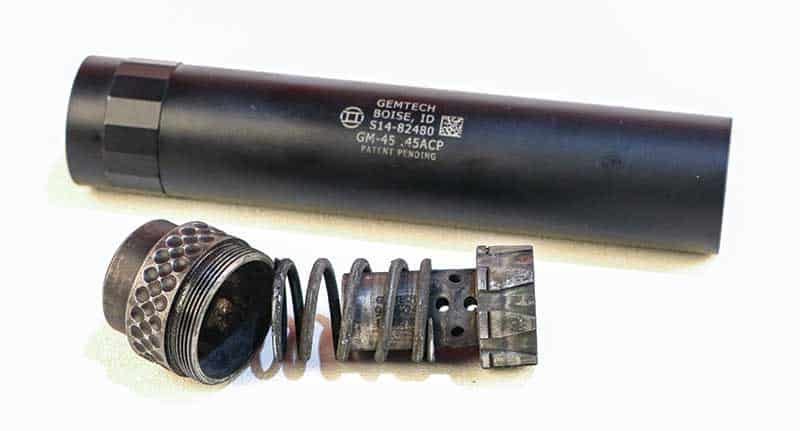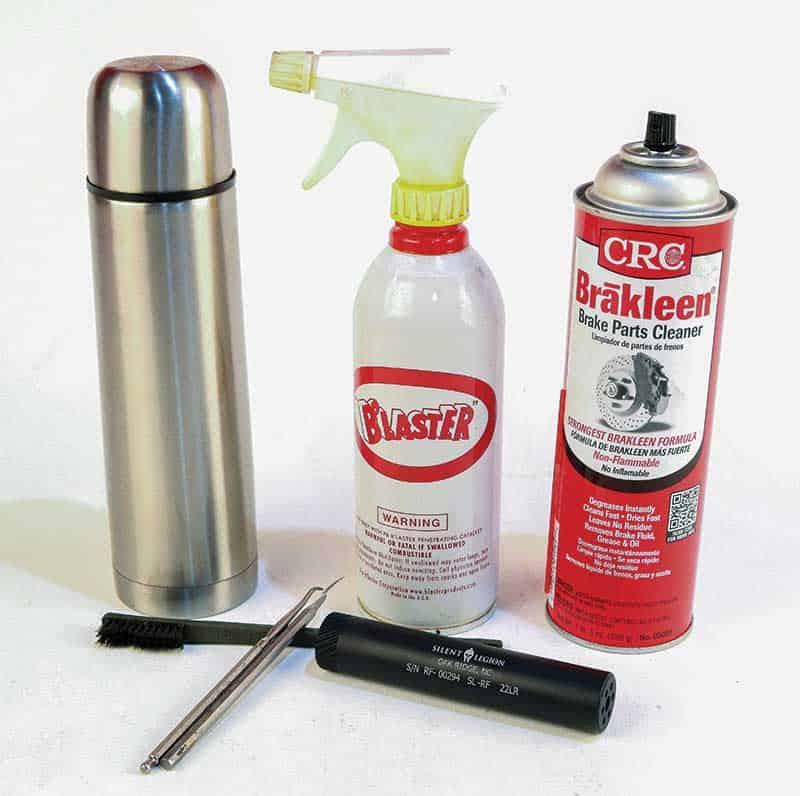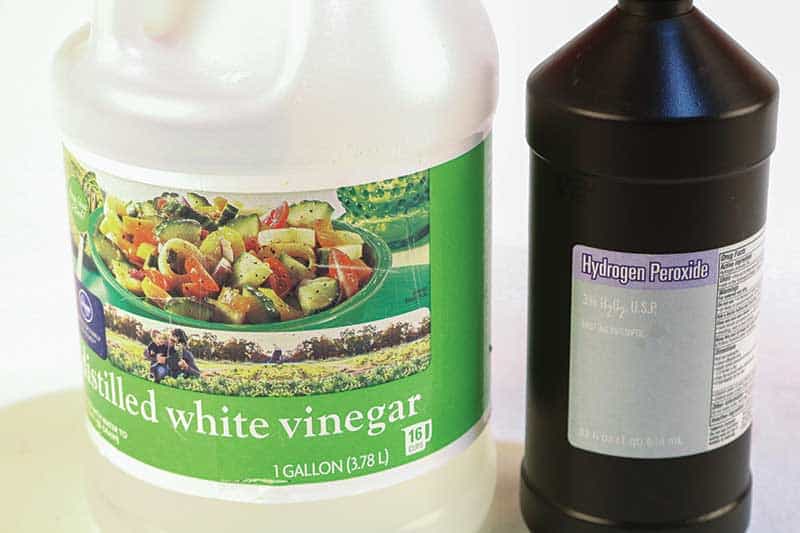Suppressor Cleaning
Get The Lead Out
Phil Dater — the veritable founding father of the modern sound suppressor — says you should clean your suppressors like you clean the catalytic converter on your car. In other words, just leave them alone. However, for those of us who just cannot abide all the carbon and lead buildup on our sound and flash suppressors, here are a few pointers.
Getting lead inside you is bad. Most occupational lead exposure comes from getting it on your hands and then rubbing your mouth. Gloves and a dust mask are good ideas when working with lead.
Get Started
Rimfire cans are the worst. They grab lead and carbon like politicians grab money. Brake cleaner, soapy water, a brass brush and dental picks are undeniably tedious but also safest for both you and your gear.
Giving your cans or flash suppressors an overnight soak in penetrating oil helps to get things started. You can build a soaking vessel out of a PVC pipe and a pair of end caps. I use an old Thermos.
Harbor Freight sells a tabletop ultrasonic cleaner for $80. These things work great but can eat up both Cerakote and aluminum baffles. The same goes for a mechanical tumbler (about $50).
Harbor Freight sells a benchtop bead blasting cabinet for $120. The blast gun alone is only 20 bucks. You’ll still need an air compressor, but a bead blaster will eventually remove most anything. Be forewarned, however. Aluminum baffles are soft. Let them linger unduly using hard media and you’ll turn them into paperweights. However, exercise discretion and a blast cabinet will do the trick.
Just Dip It
The most radical way to remove lead is The Dip. This is a 50/50 solution of hydrogen peroxide and vinegar. This vile concoction will happily bubble away lead from stainless steel. Leave it overnight for best results and neutralize everything afterwards in a bath of baking soda and dishwashing detergent. The Dip will dissolve aluminum and can potentially damage titanium. Use it for stainless steel components only.
Warning — I’m freaking serious here. The Dip produces lead acetate as a byproduct. Lead acetate is just crazy poisonous. It’s a neurotoxin that can be inhaled or absorbed through the skin. It will cause cancer, damage your internal organs, and give you gimpy kids. It killed the Pope in 1047 (no kidding). DO NOT USE THE DIP unless you have proper protective gear and access to a hazardous waste disposal facility in which to discard the effluvium. Some machine shops maintain the capacity to dispose of hazardous wastes such as these.
I have a .22 suppressor weighing twice what it did when I bought it, and a 9mm can I haven’t been able to disassemble for a decade. They both still run like crack-addled ants. However, if you just can’t stand a dirty can, these techniques will tidy them up.
Lastly, I’m not a chemist. Please don’t write Editor Brent a bunch of agitated emails citing such stuff as covalent bonds and electron shells. Just be careful with The Dip.






